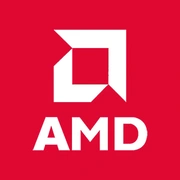AMD Radeon R9 290

AMD Radeon R9 290 in 2025: Nostalgia or Relevance?
An analysis of an outdated legend for modern tasks
Introduction
Released in 2013, the AMD Radeon R9 290 became a symbol of the era of high-performance GPUs at reasonable prices. However, in 2025, twelve years after its release, its place in the world of gaming and professional tasks raises questions. Should we consider this card today? Let's explore the details.
Architecture and Key Features
Hawaii: Foundation for the Future
The R9 290 is built on the Graphics Core Next (GCN) 1.1 architecture (codename Hawaii), created using a 28nm manufacturing process. Its core specifications include:
- 2560 stream processors;
- 160 texture units;
- 64 render output units.
Unique Features for Its Time:
- Mantle API — the predecessor to Vulkan, optimizing CPU interaction.
- TrueAudio — hardware audio processing (rarely used in games).
- Eyefinity — support for multi-monitor configurations.
Limitations in 2025:
- No support for DirectX 12 Ultimate, ray tracing (RTX/DXR), or AI accelerators (DLSS/FSR).
- Modern technologies like FidelityFX Super Resolution (FSR) are unavailable due to lack of compatibility.
Memory: Potential and Limitations
GDDR5: Record Bus Width
- Capacity: 4 GB.
- Type: GDDR5 with a 512-bit bus.
- Bandwidth: 320 GB/s (higher than many budget cards in 2025!).
Impact on Performance:
- In games from 2024–2025, 4 GB of VRAM is a critical minimum. For instance, Starfield (2023) requires 6–8 GB at ultra settings in 1080p.
- Wide bus compensates for volume deficiency in older projects (e.g., The Witcher 3), but it won’t suffice for 4K or high-resolution textures.
Gaming Performance: Realities of 2025
1080p: Acceptable for Less Demanding Projects
- Cyberpunk 2077: ~25–30 FPS on low settings.
- Call of Duty: Warzone 2.0: ~40 FPS on medium settings.
- Fortnite: ~50–60 FPS (without enabling FSR).
1440p and 4K: Not for Modern AAA Games
- In Elden Ring (1440p, medium settings): ~20–25 FPS.
- 4K is only feasible in indie games or projects from the 2010s (e.g., GTA V).
Ray Tracing: Not supported.
Advice: For comfortable gaming in 2025, select Low/Medium settings and a 1080p resolution.
Professional Tasks: An Outdated Tool
Video Editing and 3D Modeling
- DaVinci Resolve: 1080p rendering is possible, but 4K will cause lag due to lack of memory.
- Blender: OpenCL rendering works, but is slower than NVIDIA's CUDA accelerators.
Scientific Calculations
- Supports OpenCL 1.2, but modern algorithms (e.g., machine learning) require more resources.
Conclusion: R9 290 is suitable for basic tasks but not for professional work with 4K content.
Power Consumption and Heat Dissipation
TDP: 250W — A Legacy of the Past
- Recommended PSU: 600W (to allow for peak loads).
- Cooling:
- The reference cooler (the "turbine") is noisy and inefficient.
- Look for models with custom coolers (e.g., Sapphire Tri-X) or consider installing liquid cooling.
- Case: Good ventilation is essential (at least 2 fans for intake/exhaust).
Comparison with Competitors
In Its Generation (2013–2014):
- NVIDIA GTX 780: The R9 290 excelled in performance but lagged in energy efficiency.
In 2025:
- NVIDIA GTX 1650 (4 GB): Comparable in price on the secondary market (~$80–100), but consumes 75W and supports DLSS.
- AMD RX 6400: A new card priced at $150–180 with similar performance, but with support for FSR and HDMI 2.1.
Conclusion: The R9 290 falls behind modern budget models in energy efficiency and functionality.
Practical Advice
Power Supply
- A minimum of 500W (for systems with mid-range processors).
- Choose models with an 80+ Bronze certification and overload protection (e.g., Corsair CX650).
Compatibility
- PCIe 3.0 x16 is compatible with PCIe 4.0/5.0 motherboards, but it won't unlock their potential.
- Check driver support: official updates from AMD ceased in 2022.
Drivers
- Use Adrenalin 21.6.1 (the last stable version for GCN 1.0–1.2).
- There may be conflicts with Windows 11—test before purchase.
Pros and Cons
Pros:
- Low price on the secondary market (~$50–80).
- High memory bandwidth.
- Support for Multi-GPU (CrossFire) for experimentation.
Cons:
- Lack of modern APIs (DirectX 12 Ultimate, Vulkan 1.3).
- High energy consumption and noise.
- Risk of purchasing a worn-out model.
Final Conclusion: Who Should Consider the R9 290?
This graphics card is a choice for:
1. Retro gaming enthusiasts assembling PCs for projects from the 2010s.
2. Budget builds where minimum price matters more than energy efficiency.
3. Temporary solutions before purchasing a modern model.
However, if you need stable performance in new games or for professional tasks—consider the AMD RX 6500 XT or NVIDIA RTX 3050. The R9 290 remains a niche product in 2025, but for certain scenarios, its potential is not yet exhausted.
Prices are valid as of April 2025. Listed for new devices, but the R9 290 is only available on the secondary market.
Basic
Memory Specifications
Theoretical Performance
Miscellaneous
Benchmarks
Compared to Other GPU
Share in social media
Or Link To Us
<a href="https://cputronic.com/gpu/amd-radeon-r9-290" target="_blank">AMD Radeon R9 290</a>